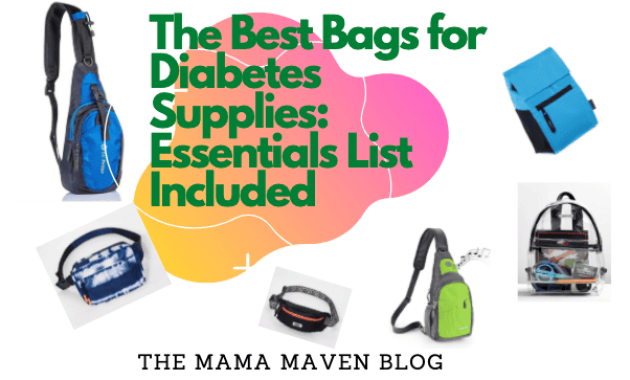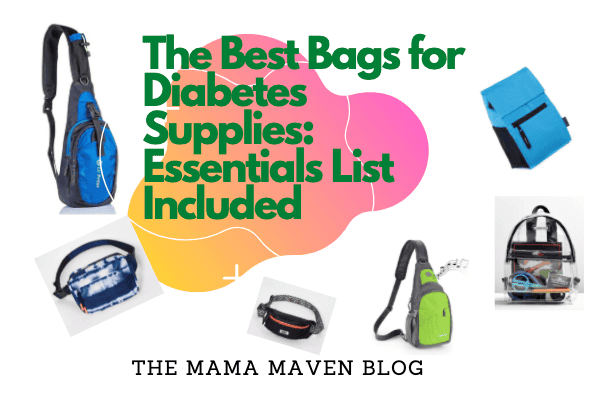
Diabet Travel Essentials for Sugar Control: A Comprehensive Guide for Safe and Enjoyable Journeys
Traveling with diabetes presents unique challenges, but with careful planning and the right diabet travel essentials, it doesn’t have to be daunting. This guide provides a comprehensive overview of the necessary items and strategies to ensure a safe, healthy, and enjoyable travel experience while managing your blood sugar levels. Whether you’re planning a weekend getaway or a long-haul adventure, being prepared is key to maintaining optimal health and avoiding complications. This article focuses on the diabet travel essentials to help you manage your condition effectively on the go.
Pre-Trip Planning: The Foundation of Safe Travel
Before embarking on any trip, meticulous planning is paramount for individuals with diabetes. This includes consulting with your healthcare provider, gathering necessary supplies, and understanding your destination’s healthcare infrastructure.
Medical Consultation and Documentation
Schedule an appointment with your endocrinologist or primary care physician well in advance of your trip. Discuss your travel plans, including the duration, destination, and any potential activities that might affect your blood sugar levels. Obtain a detailed travel health plan that includes:
- A comprehensive medical summary outlining your diabetes type, current medications, dosages, and any allergies.
- A letter from your doctor explaining your diabetes, the need for your medications and supplies, and any special considerations. This letter is crucial if you’re traveling internationally, as it can help you navigate customs and security checkpoints.
- Copies of your prescriptions, including both brand and generic names of your medications.
- Information on how to obtain medical care in your destination, including the location of hospitals, clinics, and pharmacies.
Insurance and Emergency Contacts
Ensure you have adequate travel insurance that covers medical emergencies, including diabetes-related complications. Verify that your insurance policy provides coverage in your destination country. Carry a list of emergency contacts, including your doctor, family members, and the local emergency services in your destination. Consider downloading an emergency contact app on your phone.
Packing Your Diabet Travel Essentials
Create a detailed checklist of your diabet travel essentials, and pack a separate bag or carry-on dedicated to these items. This ensures that your essential supplies are readily accessible in case of delays or lost luggage. The following sections detail the essential items you should include.
Essential Supplies: Packing the Right Diabet Travel Essentials
The core of managing diabetes while traveling lies in packing the right diabet travel essentials. This involves medications, monitoring equipment, and supplies for emergencies.
Medications and Delivery Devices
Pack an ample supply of your diabetes medications, including insulin (if applicable), oral medications, and any other prescribed drugs. Carry at least twice the amount you anticipate needing for the duration of your trip, in case of unforeseen circumstances. Store insulin properly, following the manufacturer’s instructions. If you are traveling to a hot climate, consider using an insulated travel case to maintain the correct temperature. For those using insulin pens or pumps, pack extra pens, needles, pump supplies, and batteries.
Blood Glucose Monitoring System
Bring your blood glucose meter, test strips, lancets, and any other necessary supplies for checking your blood sugar levels. Pack extra test strips, as they can be difficult to find or expensive in some locations. Ensure you have a sharps container for safe disposal of used lancets and needles. Familiarize yourself with the meter’s performance at different altitudes and temperatures, as these factors can sometimes affect readings. Regular blood sugar monitoring is one of the most important diabet travel essentials.
Emergency Supplies
Prepare for potential emergencies. Include a glucagon emergency kit, which can be used to treat severe hypoglycemia (low blood sugar). Carry fast-acting carbohydrates, such as glucose tablets, juice boxes, or hard candies, to treat low blood sugar. Consider packing a medical ID bracelet or necklace that states you have diabetes and lists any relevant medical information.
Food and Hydration: Maintaining Stable Blood Sugar
Maintaining a consistent eating schedule and adequate hydration is crucial for managing blood sugar levels while traveling. Planning meals and snacks ahead of time is essential.
Planning Your Meals and Snacks
Research your destination’s food options. Identify restaurants and grocery stores that offer diabetes-friendly meals and snacks. Pack non-perishable snacks, such as nuts, seeds, whole-grain crackers, and protein bars, to have on hand. Be mindful of portion sizes and carbohydrate content. Consider using a food tracking app to monitor your carbohydrate intake.
Hydration and Blood Sugar
Dehydration can significantly impact blood sugar levels. Drink plenty of water throughout the day, especially when traveling by air or in hot climates. Avoid sugary drinks, such as soda and juice. Keep a water bottle with you and refill it regularly. Adequate hydration is vital among your diabet travel essentials.
Navigating Travel Challenges: Adapting to New Environments
Traveling can introduce unique challenges to diabetes management. These include time zone changes, changes in activity levels, and unfamiliar foods. Adapting to these challenges requires proactive strategies.
Adjusting to Time Zone Changes
When traveling across time zones, consult with your doctor or certified diabetes educator about adjusting your medication schedule. You may need to adjust your insulin dosages or oral medications based on the time difference. Monitor your blood sugar levels more frequently during the adjustment period.
Managing Activity Levels
Changes in activity levels can impact blood sugar. If you plan to be more active than usual, such as hiking or sightseeing, be prepared to adjust your medication or carbohydrate intake accordingly. Carry extra snacks and be prepared to treat any low blood sugar symptoms. If you are less active than usual, it’s important to monitor your glucose levels to keep your blood sugar in check. This requires you to bring the essential diabet travel essentials.
Dealing with Unfamiliar Foods
When dining out or eating unfamiliar foods, be mindful of carbohydrate content and portion sizes. Ask about ingredients and cooking methods. Opt for healthy choices, such as lean proteins, vegetables, and whole grains. Be prepared to treat any high or low blood sugar episodes that may arise.
Airport Security and International Travel
Navigating airport security and international travel with diabetes requires additional preparation.
Security Checkpoints
Inform security personnel that you have diabetes and are carrying medical supplies, including medications, syringes, and insulin pumps. Carry a doctor’s letter and/or a medical ID card to verify your medical needs. Be prepared to undergo additional screening if necessary. Keep all your diabet travel essentials readily accessible.
International Travel Considerations
Research the healthcare system in your destination country. Locate hospitals, clinics, and pharmacies beforehand. Learn basic phrases in the local language related to diabetes care. Consider purchasing an international SIM card to stay connected and access medical assistance if needed. Make sure you have all the diabet travel essentials needed.
Staying Active and Healthy While Traveling
Even while on vacation, maintaining your health is important. This includes regular exercise, stress management, and proper foot care.
Exercise and Activity
Incorporate physical activity into your travel plans. This can include walking, swimming, or other forms of exercise. Monitor your blood sugar levels before, during, and after exercise. Adjust your insulin dosage or carbohydrate intake as needed.
Stress Management
Traveling can be stressful, which can impact blood sugar levels. Practice stress-reduction techniques, such as deep breathing, meditation, or yoga. Get adequate sleep. Schedule breaks and allow yourself time to relax.
Foot Care
Diabetes can increase the risk of foot problems. Inspect your feet daily for any cuts, blisters, or other injuries. Wear comfortable shoes and socks. Avoid walking barefoot. Seek medical attention immediately if you notice any foot problems. Foot care is one of the crucial diabet travel essentials.
Conclusion: Enjoying Your Travels with Diabetes
Traveling with diabetes requires careful planning and preparation, but it is entirely possible to enjoy your travels while maintaining good blood sugar control. By packing the right diabet travel essentials, consulting with your healthcare provider, and staying vigilant about your health, you can experience new adventures with confidence. Remember to always carry your diabet travel essentials and to be prepared for any situation. Safe travels!
[See also: Related Article Titles]

